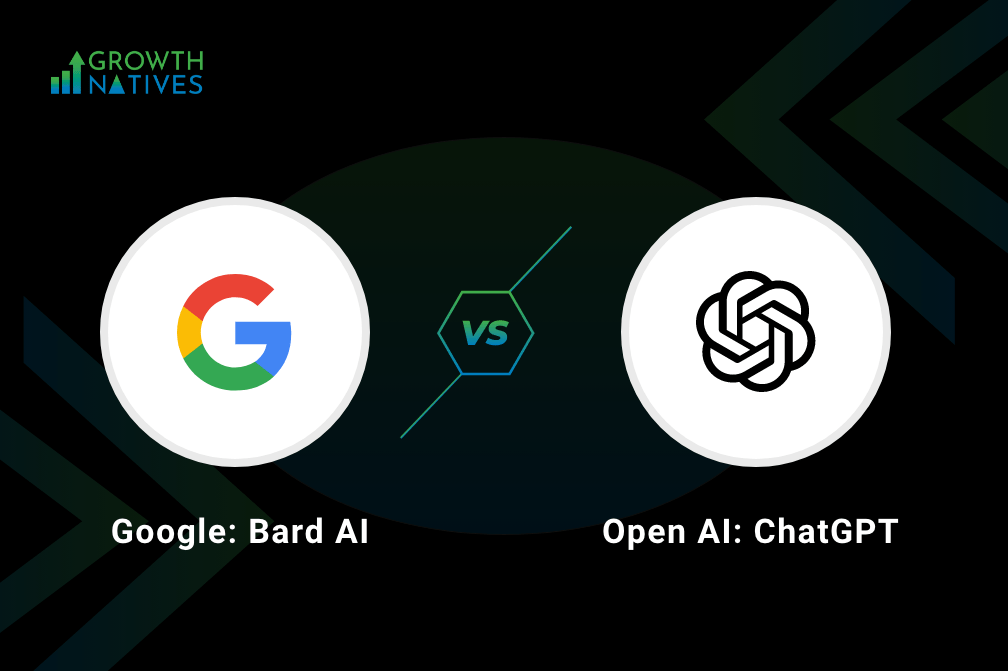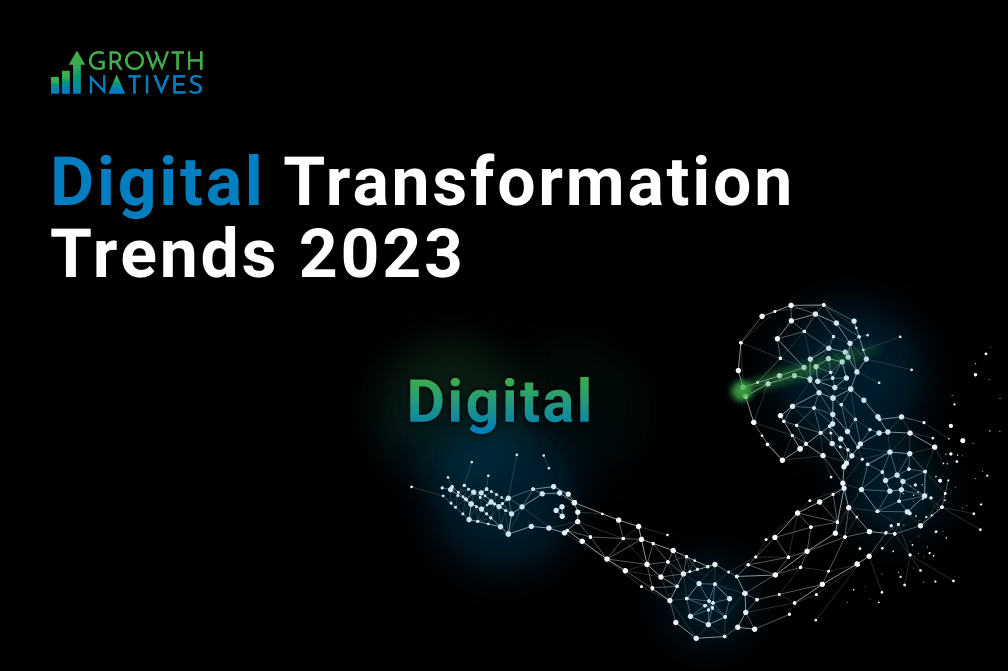Unlocking Business Success with Digital Transformation

Table of Contents
“The only constant in business is change, and digital transformation is driving the pace of that change." - John Chambers, former CEO of Cisco Systems.
Ladies and Gentlemen, we stand at the cusp of a new era, where technology is changing the very fabric of our society. The digital landscape is transforming the way we live, work, and interact with each other. The power to drive innovation, improve efficiency, and enhance customer experience lies within our grasp. Today, we embark on a journey of digital transformation, where we embrace change and harness the power of technology to shape our future.
But the million dollar question is: What exactly does "digital transformation" mean?
Is it a matter of staying updated with technology and software? Or does it suggest that customers want to communicate with brands in entirely different ways? Or perhaps it expresses the idea of redesigning your business to take advantage of the exciting new opportunities presented by technology. Don’t worry, we are here to explain it bit by bit.
What Is Digital Transformation?
Digital transformation is the integration of digital technology into all areas of a business, resulting in fundamental changes to how the business operates and delivers value to customers.
It involves using technology to fundamentally change the way organizations operate, create new revenue streams, and reach new customers. Digital transformation has the potential to dramatically improve efficiency, increase competitiveness, and drive growth.
This process involves the adoption of new digital tools, the digitization of business processes, and the integration of data and analytics to inform decision-making. Ultimately, digital transformation is about using technology to create a better future for the business and its stakeholders.
Afterall, From 2022 to 2030, the global market for digital transformation is anticipated to expand at a compound annual growth rate (CAGR) of 23.1%, reaching $3,810.05 billion. These numbers alone show how quickly this tendency is permeating every industry in the world. The catchphrase of our day is "digitize to survive," and in the coming years, "digital transformation" will be the "inevitable reinvention of business."
4 Types of Digital Transformation
Although many businesses concentrate on organizational change, there are four different forms of digital transformation to take into account if you want to get the most out of it.
- Operational Transformation: This type of digital transformation focuses on improving the efficiency and effectiveness of existing business operations by incorporating digital technologies into processes and systems. This can involve automating manual tasks, streamlining workflows, and integrating disparate systems to improve data accuracy and visibility. By optimizing operations, businesses can reduce costs, improve the customer experience, and increase productivity.
- Customer Experience Transformation: This type of digital transformation is centered on enhancing the customer experience by incorporating digital technologies into the customer journey. This can involve creating omnichannel experiences, leveraging customer data to personalize interactions, and using AI and machine learning to provide real-time support and recommendations. The goal of customer experience transformation is to create a seamless and engaging experience that meets the evolving needs and expectations of customers.
- Business Model Transformation: This type of digital business transformation involves rethinking the entire business model to take advantage of new digital technologies and market opportunities. This can involve creating new products and services, exploring new revenue streams, and entering new markets. Business model transformation requires a mindset of innovation and risk-taking, as well as a willingness to challenge established ways of doing things. The goal is to create a business that is adaptive, resilient, and capable of thriving in a rapidly changing digital landscape.
- Cultural Transformation: This type of digital transformation is centered on changing the culture and mindset of an organization to one that is more digitally-focused and agile. This involves empowering employees with the skills and tools they need to succeed in a digital environment, and creating a culture that values innovation and continuous improvement. Cultural transformation is essential to unlocking the full potential of digital transformation and ensuring that all parts of the organization are aligned behind a common goal.
How to Implement Digital Transformation in Your Business to Drive Growth
Implementing digital transformation in a business involves several steps:
1. Develop a Clear Strategy
Develop a clear and comprehensive digital transformation strategy that aligns with the overall goals and objectives of the business. This should involve an assessment of the current state of the business, the identification of areas for improvement, and the development of a roadmap for change.
2. Engage Stakeholders
Engage all relevant stakeholders, including employees, customers, partners, and suppliers, in the digital transformation journey. This will help to build buy-in, ensure that everyone is working towards common goals, and facilitate the adoption of new technologies and processes.
3. Invest in Technology
Choose the right technology solutions to support the digital transformation strategy. This may involve implementing new systems, tools, and platforms, as well as upgrading existing ones.
4. Foster a Culture of Innovation
Encourage an environment of inventive thinking and ongoing enhancement across the entire organization. This involves empowering employees with the skills and tools they need to succeed in a digital environment, and creating a work environment that supports digital transformation initiatives.
5. Continuously Assess and Refine
Continuously assess and refine the digital business transformation strategy and processes. This will help to ensure that the business remains on track and is able to respond to changing market conditions and customer needs.
6. Collaborate and Partner
Collaborate and partner with other organizations, including technology vendors, consultants, and industry experts, to ensure that the business has access to the resources and expertise it needs to succeed.
7. Embrace Change
Embrace change and be willing to challenge established ways of doing things. Digital transformation requires a mindset of innovation and risk-taking, and a willingness to experiment and try new things.
3 Digital Transformation Mistakes to Avoid
Implementing digital business transformation is a complex process and things can go south quickly if you do not take into account every mistake you should avoid while implementing it.
- Having the wrong data: When it comes to data, it's not about quantity but quality, therefore businesses need to be sure they're looking at the proper data and generating insights to advance.
- Staff resistance: This will occur when they are unaware of the benefits and reasons behind the change. Make sure your workforce is aware of the reasons behind a digital transformation and its advantages for the company and its clients.
- Undervalue the costs: Digital transformation is a costly process. It is important to ensure that your budget is sufficient to fulfill your expectations and goals prior to commencing.
Conclusion
Digital transformation is a broad term that encompasses a wide range of components that, when put together, define how an organization handles interactions with customers and clients, how it uses internal tools and controls employee interactions, and eventually how this new digital framework is supported technically. Nonetheless, the financial component is not the primary hindrance for any entity undergoing a digital transformation. The transition eventually lowers operational expenses if done correctly.
Don’t know where to start? We got you! Our business experts at Growth Natives can help you implement a digital transformation strategy for your business. Connect with us at info@growthnatives.com.




